#fork-tailed drongo
Explore tagged Tumblr posts
Text

Big bird (Common Ostrich, Struthio camelus australis) and small bird (Fork-tailed Drongo. Dicrurus adsimilis). Etosha National Park, Namibia.
1 note
·
View note
Text

Cuckootober day 17 - Fork-tailed drongo-cuckoo (Surniculus dicruroides)
Sadly, there is no evidence of them parasitizing drongos, despite looking so much like them.
#fork-tailed drongo-cuckoo#i unlocked the secret of: mix my own blacks#it's working better#cuckootober#cuckoos#watercolor#drawing stuff
29 notes
·
View notes
Text

Fork-tailed Drongo-Cuckoo (Surniculus dicruroides), family Cuculidae, order Cuculiformes, India
photograph by Shantanu Kuveskar
440 notes
·
View notes
Text

Peter Evans, photographer
'Spangled Drongo'
Queensland, Australia
The spangled drongo (Dicrurus bracteatus) is a bird of the family Dicruridae. It is the only drongo to be found in Australia, where it can be recognised by its black, iridescent plumage and its characteristic forked tail. It feeds on insects and small vertebrates. It has complex and varied calls and is a mimic of the sounds it hears. It arrives in Queensland in late spring and breeds high in an isolated tree, producing three to five young each year.
127 notes
·
View notes
Text

By Bernard DUPONT from FRANCE - Fork-tailed Drongo (Dicrurus adsimilis), CC BY-SA 2.0, Link
47 notes
·
View notes
Text

September 6, 2024 - Short-tailed Drongo (Dicrurus striatus) These drongos live in forests and dense scrub in the eastern and southern Philippines. Foraging alone or in small groups, they eat insects and nectar, usually hunting from perches and sometimes following monkeys or squirrels to capture fleeing prey. Possibly breeding between February and May, they build nests from plant fibers hung from forked branches and may lay clutches of three eggs.
75 notes
·
View notes
Text
Surniculus drongo-cuckoo



14 notes
·
View notes
Text
In an African Animals AU, what would everyone be?
I planned to put Arlecchino as a lioness who took over her pride.
Risa as a Jackal
Freminet as a Bat eared fox
Lyney and Lynette as Servals
Il Dottore as a Hyena
Childe as a Rüppels Fox or Wild dog
Pantalone as a Fork tailed drongo.
I'm still thinking about other characters
#genshin impact#yandere fatui#family fatui#genshin impact fatui#genshin impact oc#big brother dottore#genshin impact x reader#lesbian#il dottore#arlecchino genshin#arlexia#arlecchino genshin impact#freminet genshin#lyney#lynette#the house of the hearth#childe#pantalone genshin#columbina#sapphic#fatui harbingers#fatui oc
19 notes
·
View notes
Text

Decided to challenge myself by drawing every single TLK character out there, up until this point in time, and post it here. You can see the finished project on my main account, though I figured to post it on my tumblr just show I could proudly show off my work and a few of my head canons.
Here's part two of all the non-raptor birds across TLG/K:
Starting strong with the egrets we have Ono/Maono(vision). The last of the Guard members to be featured here, though hardly due to lack of interest. I do like Ono, for how know-it-all and blunt he can be, I do see the appeal in his respectful and pragmatic nature, plus seeing him in his arc in the third season. He eventually becomes the Night Pride's majordomo/scout for the Day Guard, filling in for the time of day when Rani and her group are asleep and Kion and his team are awake. Ono, like myself, if also ace-aro, so while he doesn't get into a relationship or fathers any children, one day, who should come to the Tree of Life but a pair of hamerkops, none other than Ona/Kuona(sight) and mother Kulinda(protect), and he does take on a fatherly-uncle type role with Ona, as well as another egret.
Next up is what I like to call the secondary TLG characters category, composed of Tamaa(appetite) the drongo, Mwenzi(partner) the red-billed tickbird, and the yellow wagtail, featured in "Beshte and the Hippo Lanes", Nyuni(the bee). For all my gripes with TLG's design and story choices, I will say that their bird designs are pretty consistently decent across the board, even if Tamaa's design resembles the Asian-native greater racket-tailed drongo instead of a more geographically appropriate fork-tailed drongo, as I've portrayed here. I did also notice that there was a female yellow wagtail, so I made her Nyuni mate and her name is Mbila(millet). Also Bupu and Kifaru make very small cameos here.
I was really surprised to find out TLK doesn't have a lot of flamingo characters. Sure they appear in quite a few comics and stories, though counting named characters and ones we see in TLG, mentioned in the TLK wiki no less, that gives us about three actual characters. So I added on two more to the ones we got. Also Africa is home to two species of flamingos, the greater and lesser species, which in my research is more just size rather then quality, though the really bright flamingos you think of when seem to be more an American/Caribbean species. Still, considering that flamingos get their pink feather coloring from crustaceans, and the more they eat the more pink they are, I'm just gonna say that the seafood/algae in TLK/G for the most part is extremely rich in carotenoid. You can pry my Barbie pink African flamingo designs from my cold dead hands.
First off are TLG's Flamingo girl 1/Fuari(happy) and Flamingo girl 2/Juisi(juice), named after two of my favorite songs. They're greater flamingos and both of them live in their flamboyance next to Azaad's territory, often becoming his meal. I imagine flamingos, while native to most of Africa where there's water, are an uncommon sight for many, though are very adored for their perky pink plumage and fabulous, flamboyant festivities. For the other flamingo character before we get to the unnamed ones we have Yeye(she). She is leader of the greater flamingos in the Pridelands, specifically at Lake Kidogo. She is also considered a bit overdramatic, as she and her fellow flamingos once nearly declared war on Kiboko and the hippopotamuses for their less kempt nature/appearances, though in fairness Kiboko was being an extra big jerk, though he alone would've made pink morsels out them realistically. I based her design off the ones glaring at Kovu before his exile in TLK2.
The last two flamingos didn't have names, but considering I'm a big fan of flamingos and we definitely needed more, here you go. First off is the one we see from "A Kinglike Hair-do" I've named Sabuni(soap), yet another song I like. While walking down with his vain monkey friend Isimo, Simba and him come across a flock of flamingos, which Isimo argues about how pretty can they really be compared to him and decides to spook them by running through them. Simba then noticed Sabuni, injured and realizes her flock was trying to protect her. Simba calls the rest of the flock back, promising not to harm any of them, and they are able to go back to their injured friend, who eventually recovers. This event would make the flamingos have a more positive outlook towards Simba later on when he set about restoring the Pridelands back after Scar's reign, making them easy support. Later in the comic the flock plus a lemur Simba helped earlier save him from a snake-infested river.
Fataki(fireworks) is the last of the flamingos, and last one named after songs I like. From "Pretty in Pink", he is the only male on this list, and is the leader of a flamboyance of lesser flamingos who take over a small pond in the Oasis during a dry spell, peeving off our Hakuna Matata trio and anyone else hoping to use the pond for cooling off. The trio decide to infiltrate the pond by painting themselves pink with berry juice and gathering fallen flamingo feathers to try and trick the flamingos into allowing them to enter, though the plan fails when they topple into the water and wash away their disguise. However before they can get pecked for their trickery, Pumbaa emerges from the mud the sight of him is so frightening that the flock flees, allowing the trio to cool off in peace. Since then the flock has avoided that specific pond in fear of the 'mud monster' that appeared before them, though still are pretty selfish and vain still.
So at this point you already know my penchant for making these lists increasingly harder for myself. TLG has a long list of bird species that they've shown or used for a line or two, but are never given proper names, just barely a wiki page if they're lucky. The next five characters do have a TLG wiki page yet no specific names. After that, I decided that the other bird designs in TLG were too good to waste, so they will be given a brief mention and name.
Starting off with the unnamed characters which mostly come from "Friends to the End", we have the peacock leader of his flock, now a congo peafowl, Shabiki(fan). Congo peafowl are technically peacocks in Africa, but are much more subdued and don't nearly have as much pizzaz with their tail feathers as your typical Indian variant, and neither are nearly as stunning as the green peafowl... fight me. They've got eyespots all over, not just their tail feathers.
Next we get some waterfowl, starting with the former barnacle geese Mother goose/Ndege(fowl), now an African goose, and her son Jirgi(flight-Hausa) and daughter Gurbi(nest-Hausa) from "Friends to the End". So with barnacle geese, apparently they create nests on high cliffs to avoid predation, however within a few days of hatching goslings must jump off these cliff faces in order to meet their parents who are foraging on the grass below, which is what we learn in TLG, however I have no knowledge of African geese doing the same. However given how rude she was, in my 'verse the chicks did fall off a cliff where their mother had decided to build their nest on top of, and was too prideful to admit she was in the wrong. She later becomes food for Makucha's Army, though her chicks thankfully make it to adulthood relatively unscathed.
Last of the waterfowl is the African black duck from "The Search for Utamu" that Fuli saves her nest from some fighting oryxes. Her name is Bata(duck) and given that her species can have 4–8 eggs at a time, I like to think she named one after Fuli. Their design was pretty nice, though I changed the orange bill/beak to the original's black, though I imagine the reason why they originally had it orange was to help with figuring which part to animate.
Now for the unnamed, background species from TLG. These guys were already enough work to figure out how to make that they'll just get a brief excerpt.
White-throated laughing thrushes: Safisha(tidy). Their colors in the show just seemed to be extremely saturated, so I mellowed them somewhere between their real-life and cartoon counterparts.
Common Kingfishers: Choraji(painting). They're only found in a TLG "Look and Find" book, though still included because... well just look how pretty they are.
Great blue turaco: Mkweli(truthful) and white-crested turaco?: Mchele(rice). Such beautiful blue feathers for the former, absolutely stunning. For the white-crested turacos, for some weird reason in the show they made them... so weird. Like they took a blue-crested turaco and used pastel colors, baby blues and creams.... so I used the real-life design here. Perfectly colorful and serviceable design, I don't know what TLG was planning, though in my book these two are happily married to one another.
Grey-Headed Tanagers: Eji(dew-Yoruba). Another really-saturated cartoon design, though I honestly was doubting whether or not it was a tanager and not a sunbird or superb starling, or even if it was meant to be a variant of the grey-headed bushstrike they've already made. However it did get to a point where looking up species was starting to not be fun, so I conceded in the end, but did mute the colors more.
Grey-Headed Bushshrikes: Pazia(veil). Not much to say, but a really good design overall, for both real-life and TLG.
Southern red bishop: Kivara(clothing). Technically put under the finches wiki page, though the Southern red bishop is actually part of the weaver family, though stunningly beautiful nonetheless.
Peach-faced lovebird: Koro(heart). A cutie patootie, him and Kivara are mates too.
Green bee-eaters: Limu(lemon) and blue-throated bee-eater: Dubaku(look). The blue-throated bee-eater is an Asian species, so it's swapped with a blue-headed/mustached bee-eater here. I also had to work with the green bee-eater design a bit, since it seems TLG based it more off the Asian green bee-eater and not off the African one, which is slightly less flashy then the former.
White-necked ravens: Mlio(crow). It seems a bit weird to put a raven here, though like the peregrine falcon, apparently they too are found all across the world minus Antarctica and weirdly South America too. Hmm, well anyways I think they are very beautiful.
Lastly is Binti the hornbill, a yellow-billed oxpecker here and you can read more about her story here, as well as why this deleted love interest for Zazu is apparently a tickbird and not a hornbill. I did give her a slight redesign and that will apply to all the unnamed chicks which I did not bother to redo here, but I feel like she has a good design for the last character on this sheet.
#african birds#lion king#lionkingchallenge#art challenge#charcater design#character design#lion guard#flamingo#egret
5 notes
·
View notes
Text
okay, birds seen at home in june round up! comes to a total of 62 species, which is oddly high for the middle of winter. the highlight was the green twinspot, which i’d only got my first ever sighting of two weeks earlier. presumably it had only found its way to our garden because of the heavy rains and flash floods (and the tornado what the fuck) a few days prior - they’re forest birds, whereas our area is more broad-leaf woodland.
full list and photos under the cut!
bar-throated apalis, black-collared + crested + white-eared barbet, cape batis, dark-capped bulbul, green-backed camaroptera*, yellow-fronted canary, fork-tailed drongo, crowned eagle*, southern black flycatcher, african dusky flycatcher, african paradise flycatcher (odd for this time of year), egyptian goose, gymnogene, southern hadeda, purple-crested loerie. speckled mousebird, black-headed oriole, rose-ringed parakeet*, black-backed puffback, red-capped robin-chat, cape glossy + black-bellied + red-winged starling, collared + greater double-collared + olive + amethyst + white-bellied sunbird, olive + kurrichane thrush, golden-rumped tinkerbarbet, southern black tit, spectacled + village weaver, cape white-eye, cardinal + golden-tailed woodpecker, red-eyed + tambourine* dove, brown-hooded kingfisher, red-backed + bronze mannikin, klaas’s cuckoo*, lesser honeyguide, grey-headed bushshrike*, familiar chat, southern grey-headed sparrow, woolly-necked stork, sombre greenbul*, green woodhoopoe, cape wagtail, southern boubou, black sparrowhawk, african palm swift, green twinspot, black cuckooshrike?, black-headed heron, little sparrowhawk?, pied crow, african goshawk
* = call heard, no visuals, ? = i’m reasonably sure it was that, but not 100%

dark-capped bulbul, taken at a nature reserve up the hill
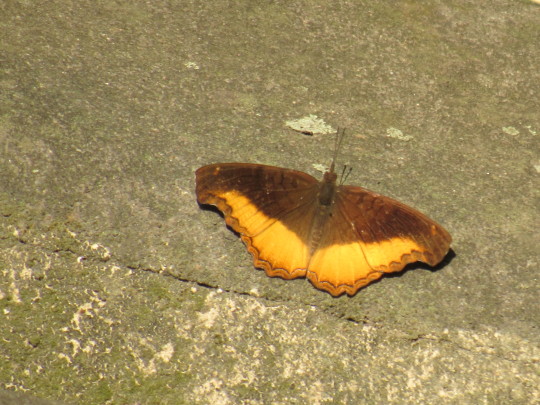
eurytela dryope

not sure yet. maybe a mocker swallowtail judging by the body?
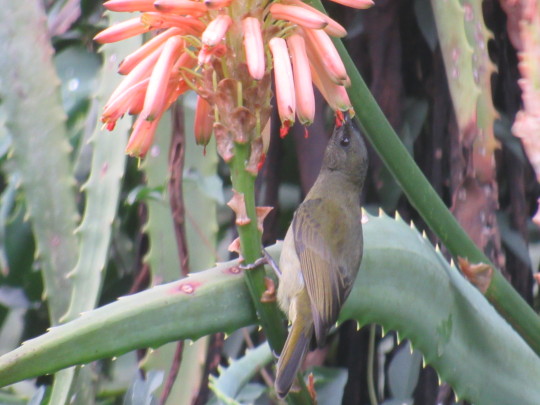
olive sunbird my beloved
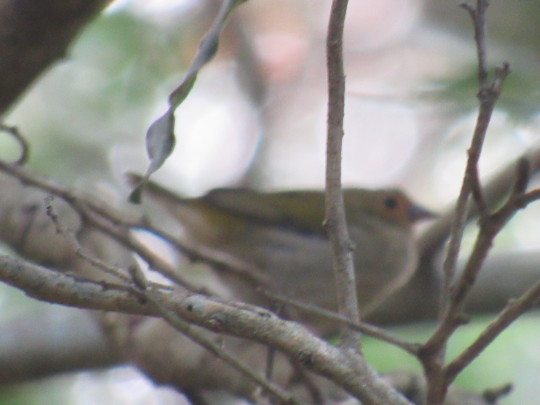
the green twinspot!! absolutely not a great photo, but i was surprised to get a pic at all tbh. either a female or juvenile
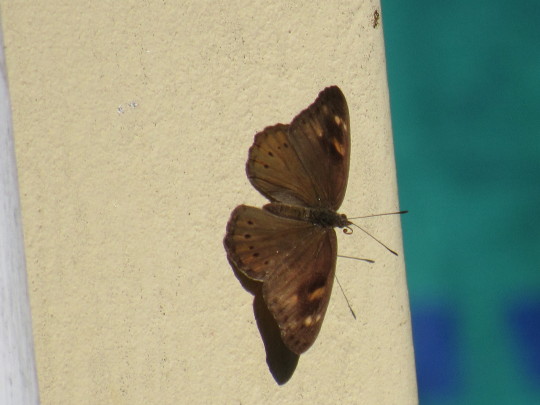
bosduival’s tree nymph

souther hadeda. chicken sized rats and the worst dawn chorus you’ve ever heard
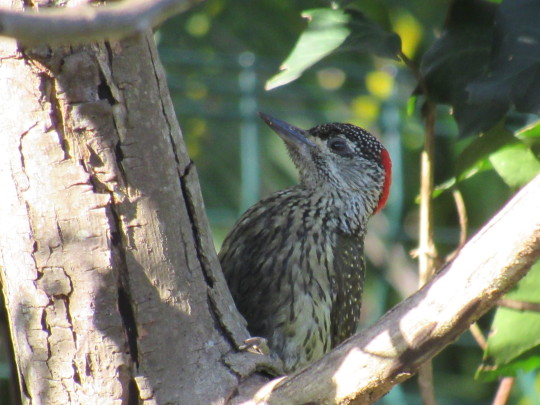
golden-tailed woodpecker
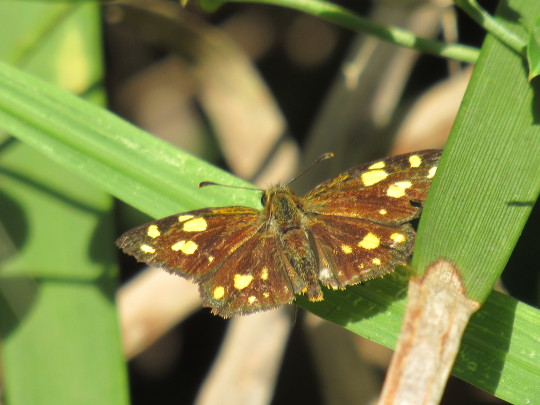
gold-spotted sylph. have never seen one before in my life, but it was hanging around the laundry
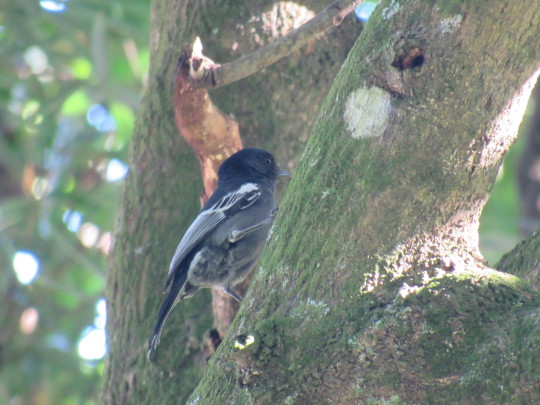
southern black tit!
#fieldnotes#birds#on birds#does tumblr have a birdwatching community tag#birding#birdwatching#bird watching
26 notes
·
View notes
Text
Explore Nainital Beyond the Crowds: Top Offbeat Destinations in Uttarakhand
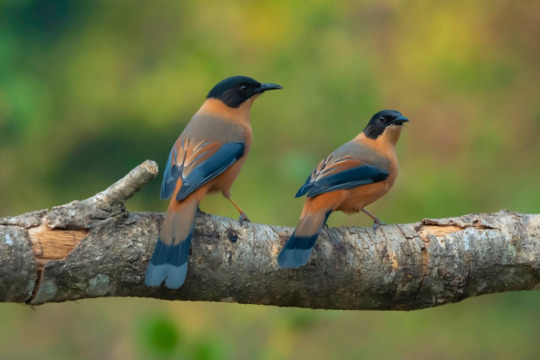
Nainital, a serene hill station in Uttarakhand, India, is renowned for its picturesque landscapes, cool climate, and tranquil lakes. While popular attractions like Naini Lake and Mall Road draw large crowds, Nainital also hides lesser-known gems that promise unique experiences away from the tourist buzz. Here, we explore eight offbeat places in Nainital, Uttrakhand that offer stunning views, peace, and unforgettable adventures. And best things to do in Uttrakhand.
1. Kilbury Bird Sanctuary
Located just 12 km from Nainital, Kilbury Bird Sanctuary is a paradise for bird watchers and nature enthusiasts. Nestled at an altitude of 2,528 meters, this sanctuary is home to over 580 bird species, including rare sightings like the Brown Wood-Owl and Fork-tailed Drongo. The sanctuary is surrounded by dense oak, pine, and rhododendron forests, offering peaceful walks and perfect photography spots. A visit to Kilbury is ideal for those seeking serenity amidst nature.
Best Time to Visit: March to June, September to December.
2. Pangot
Just 15 km from Nainital, Pangot is a quaint village known for its untouched beauty and tranquil environment. This offbeat destination is part of the Naina Devi Himalayan Bird Conservation Reserve, housing over 200 bird species. The village offers scenic hiking trails, including the Pangot-Tiffin Top trek, providing breathtaking views of the surrounding hills. Camping under the stars here is a must for a truly unique experience.

3. Sattal
Sattal, located 23 km from Nainital, is famous for its seven interconnected lakes surrounded by dense forests. This offbeat location offers a peaceful escape from the hustle and bustle, with activities like boating and fishing in the serene lakes. The area is also rich in biodiversity, making it perfect for nature walks and bird watching. Sattal is a hidden treasure for those who appreciate natural beauty and tranquility.
Best Time to Visit: March to June, September to December.
4. Ghorakhal
Ghorakhal, a picturesque village just 15 km from Nainital, is known for its serene surroundings and the revered Golu Devta Temple. The village is also famous for its lush tea gardens, offering visitors a chance to explore the tea-making process. Ghorakhal provides a blend of spirituality, natural beauty, and local heritage, making it a must-visit for those looking to explore Nainital’s quieter side.
Best Time to Visit: March to June, September to November.
5. Kainchi Dham
Kainchi Dham, located 17 km from Nainital, is an offbeat spiritual destination famous for its ashram dedicated to Neem Karoli Baba. This peaceful retreat is surrounded by beautiful hills and forests, making it a perfect place for meditation and reflection. Kainchi Dham is not just a spiritual haven but also a hidden gem offering breathtaking natural beauty.

6. Mukteshwar
Mukteshwar, 51 km from Nainital, is an offbeat destination known for its ancient Shiva temple and panoramic views of the Himalayas. Adventure enthusiasts can indulge in activities like rock climbing and rappelling, while nature lovers can explore the scenic trails. Mukteshwar offers a perfect blend of spirituality, adventure, and natural beauty, making it one of the top offbeat places near Nainital.
Best Time to Visit: March to June, September to November.
7. Ramgarh
Ramgarh, often referred to as the ‘Fruit Bowl of Kumaon,’ is an offbeat destination 25 km from Nainital. Known for its vast orchards of apples, peaches, and pears, Ramgarh offers a peaceful retreat amidst nature. The area also boasts charming old houses and scenic hiking trails with stunning Himalayan views. Ramgarh is a must-visit for those looking to experience the rural charm and natural beauty of Nainital.
Best Time to Visit: March to June, September to November.
8. Bhimtal
Bhimtal, located 22 km from Nainital, is known for its serene Bhimtal Lake. Visitors can enjoy peaceful boat rides and explore the small island in the middle of the lake, which houses an aquarium. For adventure seekers, Bhimtal offers activities like paragliding, hiking, and zorbing. This offbeat destination combines nature’s tranquility with thrilling experiences, making it a must-visit.

Conclusion
Nainital is not just about its famous lakes and bustling markets. These eight offbeat places offer a different perspective on this charming hill station, providing opportunities for peace, adventure, and spiritual growth. Whether you're a nature lover, adventure enthusiast, or spiritual seeker, Nainital's hidden gems promise unforgettable experiences.
0 notes
Text

I had a lot of fun doing Avian August this year, but the focus on a single family of birds had me thinking a lot about how much I love cuckoos and the sheer variety they have, so I decided I would make my own list... Please join me for #Cuckootober !!
Prompt list in plain text under the cut:
1. Striped cuckoo (Tapera naevia) 2. Red-crested malkoha (Dasylophus superciliosus) 3. Lesser ground-cuckoo (Morococcyx erythropygus) 4. Running coua (Coua cursor) 5. Yellow-billed cuckoo (Coccyzus americanus) 6. Violet cuckoo (Chrysococcyx xanthorhynchus) 7. Dwarf cuckoo (Coccycua pumila) 8. Scale-feathered malkoha (Dasylophus cumingi) 9. Pavonine cuckoo (Dromococcyx pavoninus) 10. White-eared bronze-cuckoo (Chrysococcyx meyerii) 11. Black-faced coucal (Centropus melanops) 12. Lesser roadrunner (Geococcyx velox) 13. Green malkoha (Ceuthmochares australis) 14. Dwarf koel (Microdynamis parva) 15. Pallid cuckoo (Cacomantis pallidus) 16. Rufous-vented ground-cuckoo (Neomorphus geoffroyi) 17. Fork-tailed drongo-cuckoo (Surniculus dicruroides) 18. Channel-billed cuckoo (Scythrops novaehollandiae) 19. Moustached hawk-cuckoo (Hierococcyx vagans) 20. Guira cuckoo (Guira guira) 21. Sumatran ground-cuckoo (Carpococcyx viridis) 22. Chestnut-winged cuckoo (Clamator coromandus) 23. Black-bellied cuckoo (Piaya melanogaster) 24. Groove-billed ani (Crotophaga sulcirostris) 25. Sirkeer malkoha (Taccocua leschenaultii) 26. Pheasant coucal (Centropus phasianinus) 27. Crested coua (Coua cristata) 28. Hispaniolan lizard-cuckoo (Coccyzus longirostris) 29. Yellow-billed malkoha (Rhamphococcyx calyorhynchus) 30. Pacific koel (Eudynamys orientalis) 31. Common cuckoo (Cuculus canorus)
#cuckootober#birblr#birds#cuckoos#i don't particularly expect anyone else to do this#but i must share the love of cuckoo diversity#so i'm posting it all official-like. for fun :)#because i am gripped with the madness (enamored with cuckoos)
18 notes
·
View notes
Text
African Drongo

Despite what the guard says about Tamaa scaring other animals "disrupting the circle of life" that is actually how drongos naturally get their food! So they were preventing Tamaa from practicing innate natural behavior for his species.
The african drongo, fork tailed drongo, or Dicrurus adsimilis is a small bird native from Sahel to South Africa that excels in mimicry, in particular deceptive mimicry.
They mimic the alarm calls of other birds and even meerkats in order to steal food which is the practice of kleptoparasitism; but they will also warn those birds of danger for real so the intended victims of the theft dont catch on.
1 note
·
View note
Text

By Derek Keats from Johannesburg, South Africa - Fork-tailed Drongo, Dicrurus adsimilis, at Pilanesberg National Park, South Africa, CC BY 2.0, Link
25 notes
·
View notes
Text

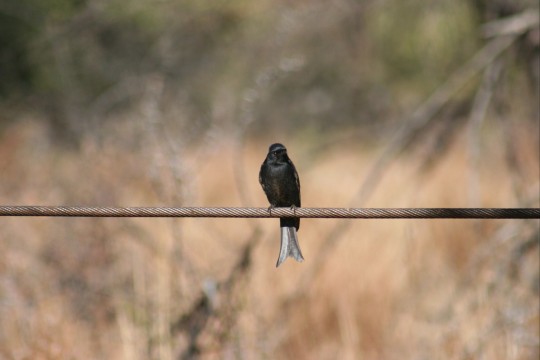
Fork-tailed Drongo. Common savanna resident, uses a variety of harsh shrill calls. It can mimic calls of raptors, pearl-spotted owlet, and cats and predatory mammals. This is done to pirate food from other animals as they drop their prize to escape from the false danger.
1 note
·
View note